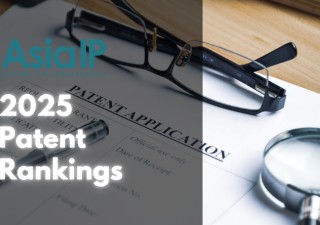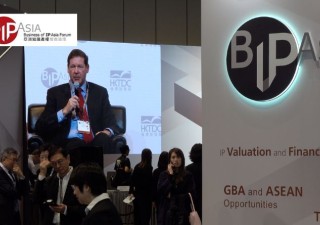How Laos is transforming intellectual property laws
30 November 2024
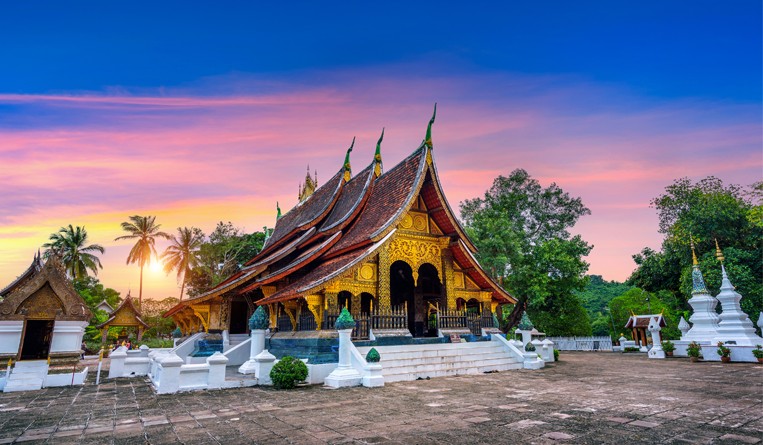
Following the recent amendments to the Law on Intellectual Property No. 50/NA, dated November 20, 2023, Excel V. Dyquiangco discusses the updates on Laos’ IP framework that align with international standards.
On March 1, 2024, the Lao Official Gazette published the newly amended Law on Intellectual Property No. 50/NA, dated November 20, 2023 (2023 Law on IP). This update aligns with Laos’ ongoing practice of periodically revising its IP legislation following the initial enactment of the Law on Intellectual Property by the National Assembly in 2007 (2007 Law on IP). Previous amendments were made in 2011 and 2017, with the latest changes introduced in 2023.
Before 2007, intellectual property protection in Laos was governed by decrees issued by the prime minister’s office, covering specific types of IP such as trademarks, patents, petty patents and industrial designs. The introduction of the 2007 Law on IP represented a major turning point, establishing comprehensive legislation that safeguarded industrial property rights, new plant varieties, copyright and related rights. This law laid the groundwork for Laos’ IP framework, aiming to promote intellectual creativity and attract foreign investment.
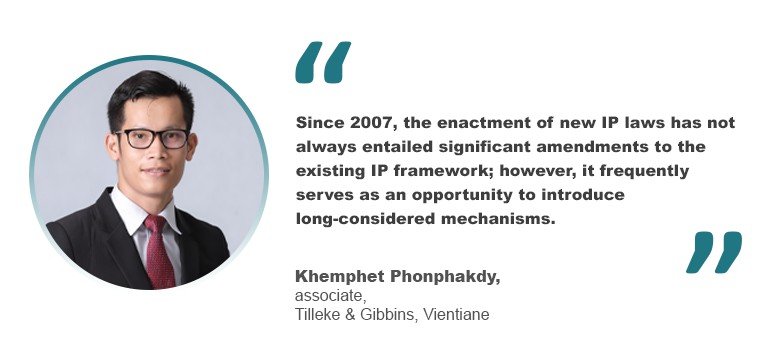
“Since 2007, the enactment of new IP laws has not always entailed significant amendments to the existing IP framework; however, it frequently serves as an opportunity to introduce long-considered mechanisms,” said Khemphet Phonphakdy, an associate at Tilleke & Gibbins in Vientiane. “For example, the amended Law on Intellectual Property No. 38/NA, dated November 15, 2017 (2017 Law on IP), introduced, among other provisions, the possibility of opposition by a third party after the formal examination of a trademark application by the examiner.”
The 2023 Law on IP brought additional changes and updates to the IP regulatory landscape in Laos. Notable changes include easing the criteria for recognizing well-known trademarks by removing ambiguous territorial requirements, thus allowing global circulation evidence to establish a trademark’s reputation. The new law also mandates the registration of trade names for legal protection, expands the definition of industrial design disclosures to include electronic media, and introduces the concept of exhaustion of rights, which could impact the stance on parallel imports.
Additionally, the 2023 Law on IP clarifies patent and petty patent applications, especially regarding the requirement for novelty in electronic disclosures. It also extends copyright protection to “other works of art,” covering both tangible and electronic forms, and lengthens the protection term for applied art and pictures to 30 years. The law further strengthens IP enforcement by explicitly prohibiting the commercial use of another party’s IP without authorization, while personal use of counterfeit goods may now be tolerated in certain cases.
“These amendments aim to attract foreign investment and align Laos’ IP laws with international standards, ensuring comprehensive protection for creators and innovators,” said Phonphakdy.
From 2007 onwards
In terms of trademark protection and enforcement, among the key differences between the 2023 Law on IP and previous amendments in 2017 and 2011 include the following:
- Term of protection. The terms of trademark protection set out by the 2011 Law on IP provided that the term protection of trademarks shall be 10 years from the date of registration, whilst the terms of trademark protection set out by the newly amended 2023 Law on IP is 10 years from the date of filing an application for registration as same as the 2017 Law on IP.
- Trade name. Under the 2017 Law on IP, registering a trade name, such as the name of a legal entity registered with the Ministry of Industry and Commerce (MOIC), was not mandatory for it to receive protection. However, the 2023 amendments introduce a new requirement: trade names must now be registered to secure protection against infringement by third parties.
- Cancellation. The 2023 Law on IP introduces two distinct procedures for the cancellation of IP assets. As with the 2017 Law on IP, third parties may file a request for cancellation with the MOIC within five years of the registration’s publication in the official intellectual property gazette. Additionally, the new amendment explicitly allows for the cancellation of trademark, industrial design or geographical indication (GI) registrations if they are deemed “incorrect” or made in “bad faith.” However, the MOIC assumes this authority without clearly defining these terms. Regarding bad faith, both before and after the 2023 Law on IP, examiners have assessed the good faith of applications prior to registration, even though the legislation did not specifically authorize this. Now, under the 2023 Law on IP, authorities are expressly empowered to evaluate bad faith after registration. This authority appears to rest with the Department of Intellectual Property, aiming to prevent Laos from becoming a haven for bad-faith applicants.
- Well-known marks. The 2023 Law on IP seems to reduce the burden of proof required to establish a mark as well-known. Under the 2017 Law on IP, several criteria were outlined for recognizing a trademark as well-known, which afforded protection in Laos even if the mark was not registered. One key criterion was that the goods or services associated with the mark had to be widely circulated “within the territory.” However, the term “within the territory” was not clearly defined, leading to ambiguity and potentially restricting a trademark’s ability to qualify as well-known, thereby limiting its protection within Laos. Another criterion was that consumers in the country had to recognize and acknowledge the trademark’s reputation widely, but again, the phrase “within the country” was left open to interpretation.
- The 2023 Law on IP removes the phrases “territory” and “country,” eliminating the uncertainty of whether the criteria applied exclusively to the Lao market. Now, evidence of widespread circulation, even globally, can be used to establish a trademark as well-known. Furthermore, examiners may consider additional criteria, though the 2023 law does not specify whether all criteria must be met or if only some are sufficient.
- Infringement. The 2017 Law on IP provides the concepts and/or principles of an infringement of IP rights and outlines the procedure for taking legal action. It details the following forms of dispute resolution: 1) reconciliation; 2) mediation; 3) administrative remedies; 4) remedy through the economic dispute resolution committee; 5) judicial actions to People’s Courts; and 6) international dispute settlement. The newly amended 2023 Law on IP still provides concepts and/or principles of an infringement of IP rights, but it does not set out the principle for IP dispute resolution itself. However, there is the act of taking legal actions under the Ministerial Decision on Administrative Remedies for Industrial Property and New Variety No. 0441/IC, March 30, 2023 (2023 Ministerial Decision Administrative Remedies for Industrial Property and New Variety). The remedies provide IP owners with the procedure for resolving the request regarding opposition, rejection, cancellation or elimination of the registration of industrial property and new plant varieties by the administrative dispute resolution committee.
- Exhaustion of rights. The 2023 Law on IP introduces the concept of exhaustion of rights, marking a significant addition to Laos’ IP legal framework. The law indicates that once a product bearing a trademark is sold, the trademark owner’s rights are exhausted. This means the owner can no longer restrict the use or resale of the product, aligning with the international exhaustion of rights doctrine. This addition may shed light on how local authorities view parallel imports.
Certain products, such as pharmaceuticals, vehicles and medicines, which require a specific licence from a licensor to a designated licensee, have seen more explicit legal frameworks. However, the overall legality of parallel imports remained unclear. “In the past, Laos has allowed the parallel import and not been overly strict in prohibiting or regulating the practice of parallel importing, but their legality has been ambiguous,” said Somphob Rodboon, managing partner at ILAW LAOS in Vientiane. “The 2023 Law on IP clarifies this by implementing the exhaustion of rights doctrine, which suggests that once a product is sold, the trademark owner loses control over its resale or further distribution. This aligns with international principles of the ‘first sale doctrine’ where the sale of a product exhausts the IP rights in that product. Consequently, parallel imports, particularly those involving genuine products that have been sold in another market, may now be legally permissible in Laos without the IP owner’s consent.”
He continued: “However, the law has not amended certain provisions that allow trademark owners to prevent third parties from using, selling, importing or exporting goods bearing identical or similar marks. This creates a potential conflict with the exhaustion of rights concept, leaving some room for interpretation. For specific goods, such as pharmaceuticals or products requiring a licensor’s authorization, the legality of parallel imports remains uncertain due to these unamended provisions.”
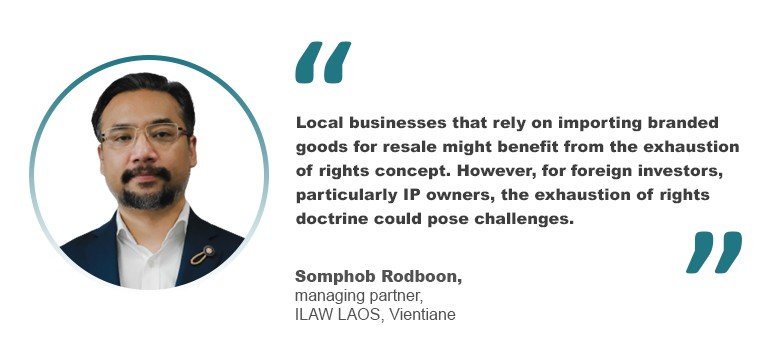
“Local businesses that rely on importing branded goods for resale might benefit from the exhaustion of rights concept. They could potentially source products at lower costs from international markets without needing permission from IP owners. This can improve competitiveness, offer price advantages and increase product availability in the domestic market,” he said.
However, it’s a different case for investors outside Laos. Rodboon said: “For foreign investors, particularly IP owners, the exhaustion of rights doctrine could pose challenges. It diminishes their ability to control the distribution channels and pricing of their products once they enter the market. This can undermine exclusive distribution agreements, disrupt brand strategy, and potentially harm brand reputation if imported goods do not meet the same quality standards as those sold through authorized channels.”
Trade names and protection
The 2023 Law on IP now mandates the registration of trade names for legal protection. Businesses that have not registered their trade names may lose their ability to prevent others from using similar or identical trade names, said Thanapha Phetkeereeskul, a senior associate at ILAW ASIA in Bangkok.
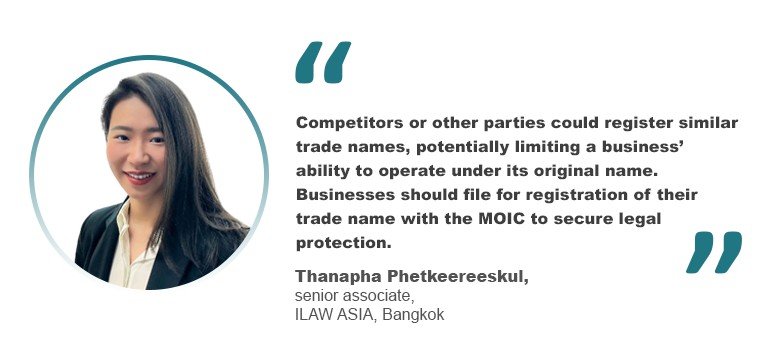
“Competitors or other parties could register similar trade names, potentially limiting a business’ ability to operate under its original name. Businesses should file for registration of their trade name with the MOIC to secure legal protection,” she said.
With the 2023 Law on IP expanding copyright protection to include electronic works and extending the protection term for applied art, what challenges or opportunities do you foresee for artists and creators in Laos?
Phetkeereeskul said: “The 2023 Law on IP expanding copyright protection to include electronic works and extend the protection term for applied art from 25 to 30 years. This allows creators to enjoy their exclusive rights for a longer period. They will have more time to monetize their creations through licensing, sales, royalties and other forms of commercialization.”
“With the expansion of copyright protection to electronic works, enforcement of rights could become more complex. Monitoring unauthorized use of digital works online may pose significant challenges for creators without adequate legal or technological resources,” she added.
Trademark squatting
When it comes to new provisions addressing bad faith applications in trademark and industrial design registrations addressing concerns about trademark squatting, what further clarifications might be needed to ensure fair enforcement?
In 2023, the Ministry of Industry and Commerce provided the 2023 Ministerial Decision Administrative Remedies for Industrial Property and New Variety.
“In order to take legal action against the bad faith application, the applicant shall file the application requesting for consideration on opposition, rejection, cancellation or elimination of the registration of industrial property,” said Viphavanh Syharath, an associate at ILAW LAOS in Vientiane. “The application will be considered and conducted by the administrative dispute resolution committee. The applicant shall file the application against the bad faith trademark applications and industrial design registration at the Department of Industry and Commerce of the Provincials and Vientiane Capital. Besides, the applicant can also file the application requesting for resolution on the dispute of the industrial design registrations at the Department of Intellectual Property.”
Syharath noted that the officer takes approximately 103 Days to proceed with the case. After consideration, if any parties disagree with the result, they can file the application for appeal within 30 days from the date of issuance of the notice. The authority will reconsider the application within five days if evidence is found sufficient and reasonable.
“By granting the MOIC the authority to cancel registrations after assessing bad faith post-registration, the law allows authorities to take corrective actions even after a trademark or industrial design has been registered,” she said. “This is essential in combating trademark squatting, as many bad-faith registrations may not be immediately apparent during the application process. It provides a mechanism to invalidate squatted trademarks after they have been granted.”
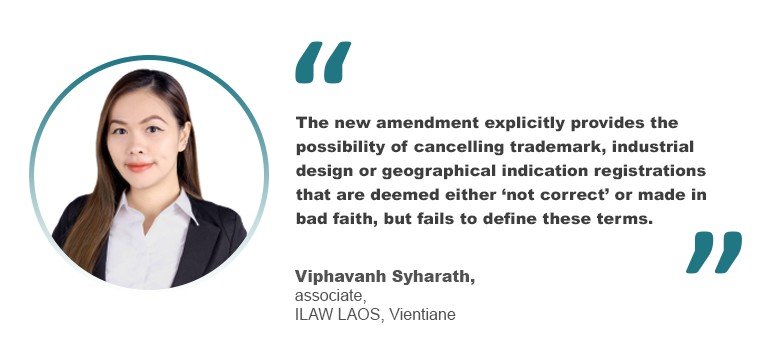
She added: “The new amendment explicitly provides the possibility of cancelling trademark, industrial design or geographical indication registrations that are deemed either ‘not correct’ or made in bad faith, but fails to define these terms. Clarification may be needed to establish clear guidelines on what constitutes a ‘not correct’ registration.”



